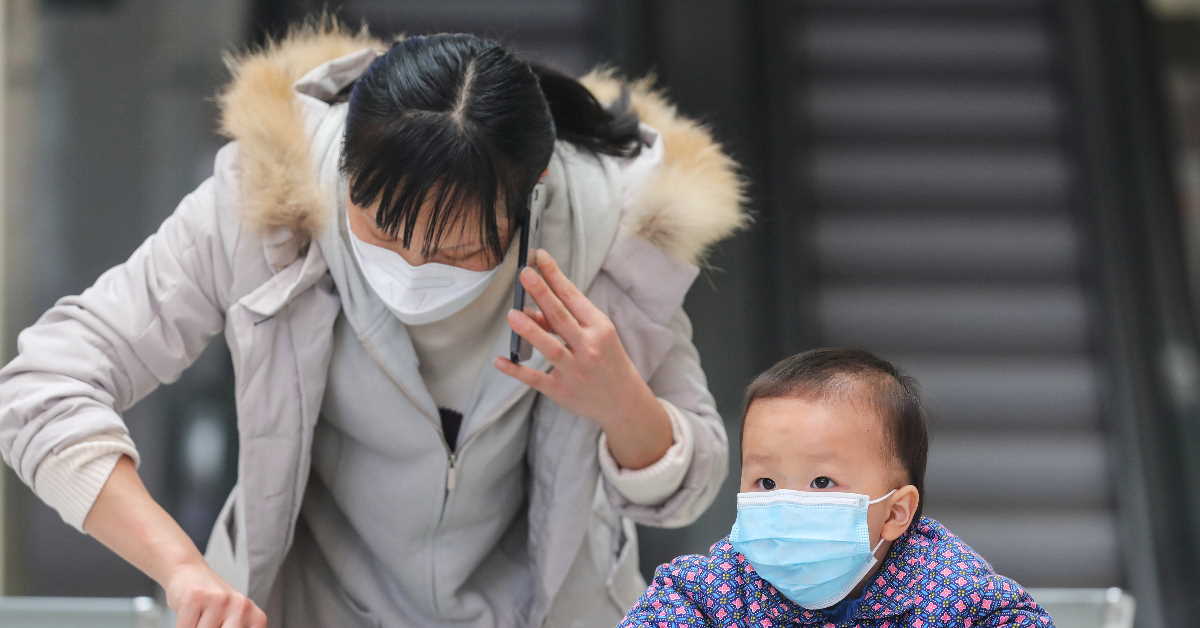As the rest of the world is engulfed in the coronavirus pandemic, China says it has turned the tide against the disease that has killed thousands of people.
From initial attempts to cover up the outbreak to later locking down cities and now declaring it "basically curbed", here is a look at how China grappled with COVID-19:
Mystery virus
The first case emerged in the central city of Wuhan on 8 December before several workers at Huanan Seafood Wholesale Market began to fall sick with a fever.
On 31 December, Wuhan health authorities announced 27 cases of suspected viral pneumonia linked to the market and notified the World Health Organization (WHO).
But officials insisted there was no evidence of human-to-human transmission and that it was "preventable and controllable".
A day later, eight people were reprimanded by Wuhan police for "spreading rumours" about the then mysterious disease.
There had been social media talk of a re-emergence of SARS, another coronavirus, which killed nearly 650 people in mainland China and Hong Kong in 2002-2003.
Li Wenliang, a 34-year-old ophthalmologist at Wuhan Central Hospital, was among those punished for raising the alarm.
Cover-up and lockdown
The number of cases in Wuhan jumped to 44 on 3 January and health authorities in Hong Kong and Singapore issued travel alerts.
China announced the existence of a "new type of coronavirus" on 9 January and the first death two days later.
But between 5 and 17 January, China reported no new cases of the virus, while Japan and Thailand declared their first infections.
During this time, Wuhan and Hubei province pressed ahead with their annual legislative meetings despite the outbreak.
Meanwhile, doctors were ordered to keep quiet about the virus and evidence of human transmission they had seen, according to an interview with Ai Fen, one of the earliest medical whistle blowers on the outbreak and a colleague of Li.
An annual mass banquet for 40,000 families organised by Wuhan authorities went ahead on 18 January.
The same day Beijing sent a team of scientific experts to Wuhan to investigate.
On 20 January, President Xi Jinping ordered that the virus be "resolutely contained" in his first public comment on the issue.
Human-to-human transmission was finally confirmed by a leading Chinese expert that day.
This marked a major turning point in the epidemic, with 291 infections reported nationwide.
Panic took hold in Wuhan, a city of 11 million, when it was abruptly placed on lockdown on 23 January. The rest of Hubei province was sealed off in the following days.
Wuhan hospitals, inundated with patients, reported dire shortages of medical supplies. Many who could not get timely treatment for themselves or relatives relayed personal tragedies on social media.
The virus spread as hundreds of millions of people travelled across the country and abroad for the Lunar New Year holiday, before travel curbs were imposed.
On 30 January, the WHO declared the outbreak a "global emergency".
'Hero' doctor dies
Between 1 and 7 February, cases in China ballooned from 11,791 to 31,161, while deaths reached 636.
On 7 February, the Wuhan medical whistle blower Li died from the coronavirus, triggering a wave of public grief and anger.
Many grievances against the authorities were swiftly censored on social media.
Days later, four high-profile local officials were purged and replaced to appease public disquiet –including the Communist Party secretaries of Wuhan and Hubei.
The province recorded a huge jump of 14,840 new infections on 13 February due to a change in diagnostic criteria, raising questions about the credibility of China's data.
Xi, usually a ubiquitous presence on state media, remained out of the spotlight.
But on 15 February Beijing released a speech by Xi showing he had urged officials to contain the outbreak as early as 7 January 7 – well before authorities announced human-to-human transmission – in an attempt to boost the leader's public image.
Xi tours Wuhan
In late February and early March, the number of new cases in Hubei and other parts of China steadily declined as outbreaks flared up in Italy, Iran and South Korea.
On 10 March, Xi visited Wuhan for the first time since the outbreak began, suggesting the Communist Party was confident it had the situation under control.
Wuhan officials touted the sealing off of all residential estates from 11 February as "critical" in curbing the spread in the city, although some experts believe it led to more cross-infections within households.
After more than 4,600 deaths and 126,000 infections across the country, China is now trying to reshape the global narrative in response to overseas criticism, casting itself as a leader in the heroic fight against the virus while other countries struggle to cope. - AFP
